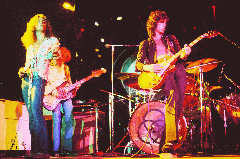- Parent Category: Reader's Corner
The Evolution Of Music Part - X TRANCE
 Trance is a genre of electronic in the 1990s. Trance music is generally characterized by a tempo of between 130 and 155 BPM (beats per minute), short melodic synthesizer phrases, and a musical form that builds up and down throughout a track. It is a combination of many forms of music such as industrial, techno, and house. The origin of the term is uncertain, with some suggesting that the term is derived from the Klaus Schulze album Trancefer (1981) or the early trance act Dance 2 Trance. In any case, the name is undoubtedly linked to the perceived ability of music to induce an altered state of consciousness known as a trance.
Add a comment
Read more: The Evolution Of Music Part - X TRANCE
Trance is a genre of electronic in the 1990s. Trance music is generally characterized by a tempo of between 130 and 155 BPM (beats per minute), short melodic synthesizer phrases, and a musical form that builds up and down throughout a track. It is a combination of many forms of music such as industrial, techno, and house. The origin of the term is uncertain, with some suggesting that the term is derived from the Klaus Schulze album Trancefer (1981) or the early trance act Dance 2 Trance. In any case, the name is undoubtedly linked to the perceived ability of music to induce an altered state of consciousness known as a trance.
Add a comment
Read more: The Evolution Of Music Part - X TRANCE



 R&B, an abbreviation for rhythm and blues, is a style that arose in the 1930s and 1940s. Early R&B consisted of large rhythm units “smashing away behind screaming blues singers (who) had to shout to be heard above the clanging and strumming of the various electrified instruments and the churning rhythm sections”. R&B was not extensively recorded and promoted because record companies felt that it was not suited for most audiences, especially middle-class whites, because of the suggestive lyrics and driving rhythms.
R&B, an abbreviation for rhythm and blues, is a style that arose in the 1930s and 1940s. Early R&B consisted of large rhythm units “smashing away behind screaming blues singers (who) had to shout to be heard above the clanging and strumming of the various electrified instruments and the churning rhythm sections”. R&B was not extensively recorded and promoted because record companies felt that it was not suited for most audiences, especially middle-class whites, because of the suggestive lyrics and driving rhythms.
 Rock and roll developed out of country, blues, and R&B. Rock’s exact origins and early influences have been hotly debated, and are the subjects of much scholarship. Though squarely in the blues tradition, rock took elements from Afro-Caribbean and Latin musical techniques. Rock was an urban style, formed in the areas where diverse populations resulted in the mixtures of African American, Latin
Rock and roll developed out of country, blues, and R&B. Rock’s exact origins and early influences have been hotly debated, and are the subjects of much scholarship. Though squarely in the blues tradition, rock took elements from Afro-Caribbean and Latin musical techniques. Rock was an urban style, formed in the areas where diverse populations resulted in the mixtures of African American, Latin Categorising music and breaking it down into genres and sub – genres on a global scale is one hell of a daunting task. Keeping that in mind, we have focused on the music of the United States of America which has often been termed as a melting pot of diverse styles of music. This, one has to attribute to large scale immigration and slavery. This brought a lot of musical styles into direct contact with each other, resulting in a lot of fusion and hybridization of the pre existing styles. Elements of foreign music arrived in the United States both through
Categorising music and breaking it down into genres and sub – genres on a global scale is one hell of a daunting task. Keeping that in mind, we have focused on the music of the United States of America which has often been termed as a melting pot of diverse styles of music. This, one has to attribute to large scale immigration and slavery. This brought a lot of musical styles into direct contact with each other, resulting in a lot of fusion and hybridization of the pre existing styles. Elements of foreign music arrived in the United States both through